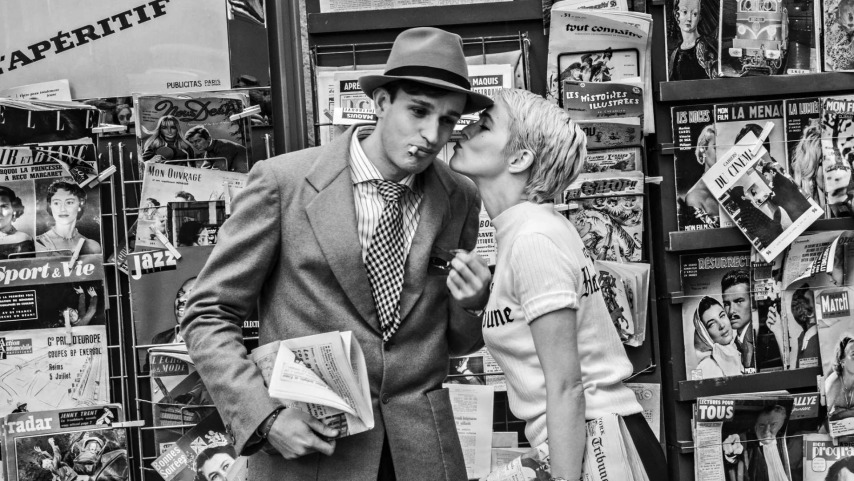Richard Linklater tries to capture a Breathless magic in his making-of drama Nouvelle Vague
The filmmaker's homage to Godard is pleasant and laudatory, but inherently lacks its subject's inventive energy.
Photo: Courtesy of Cannes Film Festival
The temptation to bring up Jacques Rivette’s maxim, that every film is a documentary of its own making, is too strong to deny when discussing Breathless. The poster boy for the French New Wave, Jean-Luc Godard made a debut that, even 75 years on, reveals a vast amount about its production and why it was significant while telling its jumpy, contemporary crime story. The shots feel stolen from Parisian streets; one can sense the crew crammed into bedroom corners, prompting the actors and inventing shots seconds before the camera starts rolling (or during, even). Every jump cut promises unseen minutes that Godard denies his audience; every line and shot borrowed from classic cinema reveals how Godard feeds on the genre, filtering it into a patchwork of moving image “truth” on his terms. This is to say, if Breathless so deftly proves Rivette right, why make a dramatized account of Breathless’ production and the culture that birthed it? Richard Linklater has been known to bite off more than he can chew, but still Nouvelle Vague doesn’t answer the contradiction at its heart—What can we possibly learn from this?—instead offering modest but compromised delight as a film-about-film dramedy.
Breathless is less interested in being pleasant; the 1960 film blends crime, philosophy, sex, and heartbreak into a compact tale of fugitive Michel Poiccard (Jean-Paul Belmondo, played here by Aubry Dullin) escaping to Paris and following up with a former American flame Patricia (Jean Seberg, played here by Zoey Deutch). Patricia is noncommittal, Michel is immature, and as the cops close in, passion and impulse set them on an inevitable, disorienting road towards destiny.
Rivette appears in Nouvelle Vague (played by Jonas Marmy), but he doesn’t lampshade the conceptual faults of Linklater’s film, just helps fill out a bit-part troupe of as many leading members of Euro cinema as possible. This includes François Truffaut, Claude Chabrol, Jean-Pierre Melville, Éric Rohmer, Robert Bresson, Roberto Rossellini, Jean Cocteau, and Agnès Varda; each offers some insight or advice to the impetuous Godard (Guillaume Marbeck) as he seeks to set himself apart from the pack and place himself into the cinematic canon with a single movie. No film school Easter egg can be missed: Like theatrical players, each character is introduced at the top of the scene, eyeballing the camera, with their names written neatly below. It’s part of Linklater’s cute and quirky imitation of the French countercultural style that nevertheless borders on parody in one scene where a Cahiers Du Cinéma meeting requires 20 names to be listed in sequence.
Oddly enough, these are some of the scenes in Nouvelle Vague that work best. Any time spent away from cameras rolling on Breathless (which includes the copious downtime Godard would insist on after shooting for two hours) are more sprightly and compelling, mainly because watching Marbeck, Dullin, and Deutch—all capable and game—pretend to come up with Breathless‘ most off-the-cuff golden streaks of creativity underlines the innately constructed nature of the story. As committed as Marbeck is, it’s not especially dramatic to watch a Godard impersonator explain his every innovation when the work itself is evidence enough of its complexity and power. Deutch throws herself into the part, but her imitation of Seberg’s introductory New York Herald Tribune scene threatens to lamely drown the whole film.

 Keep scrolling for more great stories.
Keep scrolling for more great stories.